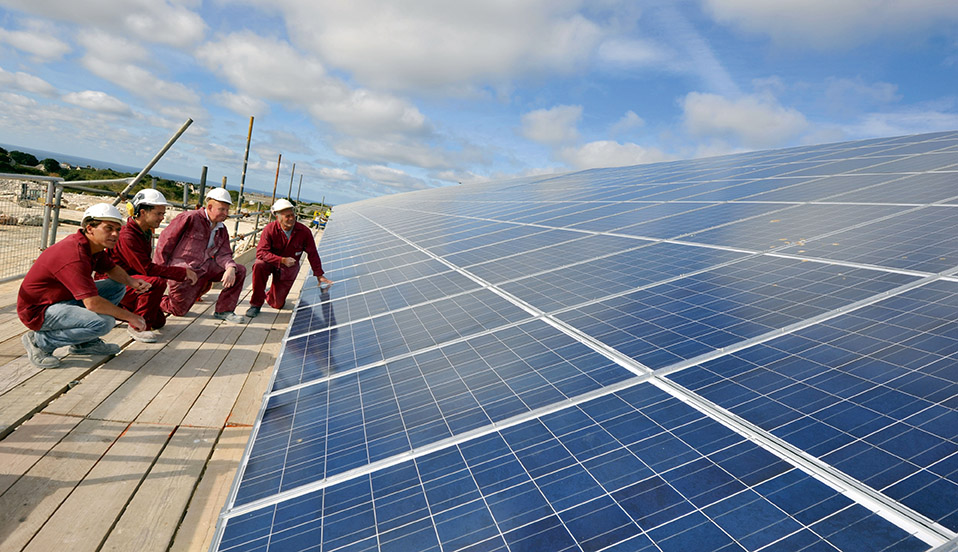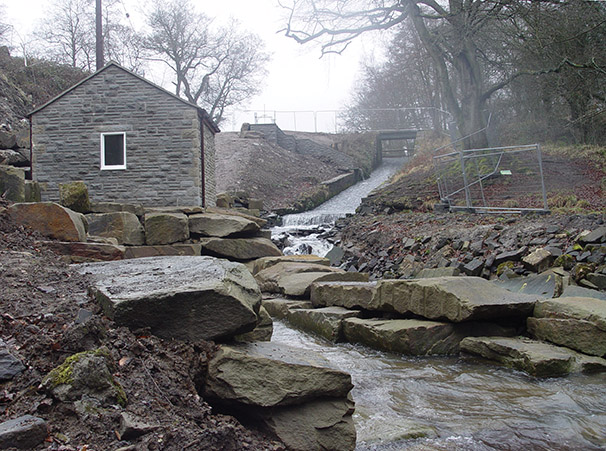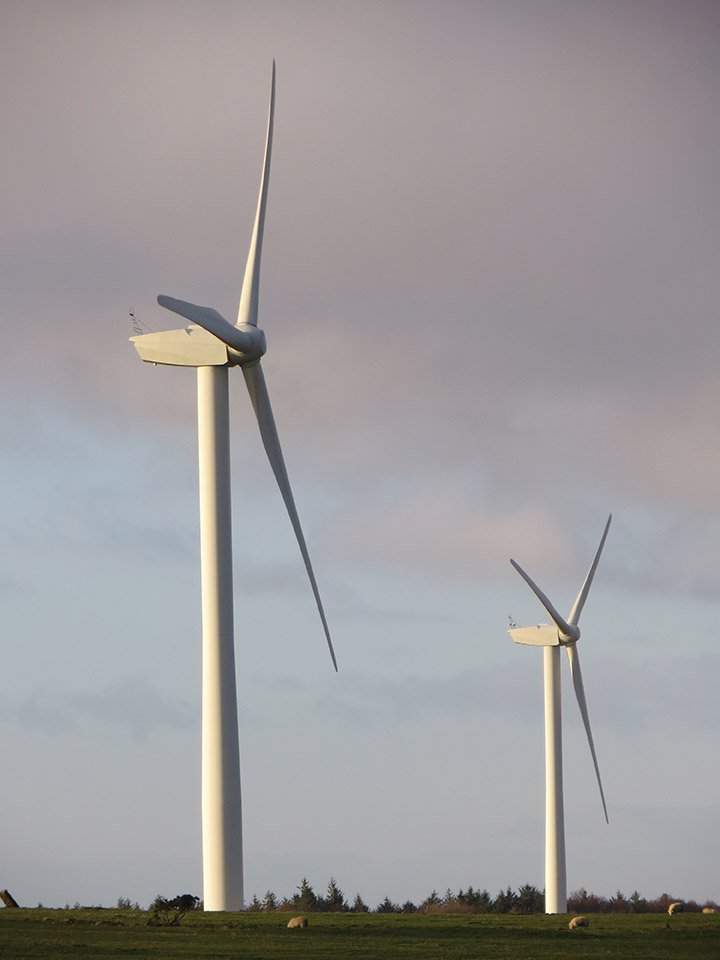Sustainability : Issues of energy and ethical trading have not gone away
Although there have been distractions lately, sustainability is still an issue. Failing to address it could be losing you business and increasing your overheads.
Maybe greenhouse gasses released into the atmosphere by mankind since the start of the industrial revolution are not leading to global warming. Perhaps global warming is just a trick of the Chinese, as the US President stated during his election campaign.
Possibly, too, restrictions on water use in California when Arnold Schwarzenegger was Governor were just his attempt to kill Sarah Connor and her son John.
But whatever the truth is about global warming and water shortages, utilities are expensive. So can a failure to address sustainability issues be if it costs you a project, as it might do in these days of BREEAM (from the UK’s BRE) and LEED (from the Green Building Council in the USA). Because even if there have been distractions of late, clients and architects are still trying to obtain BREEAM and LEED ratings, not least because it can increase the value of the properties they build.
Globally there are more than 553,000 BREEAM certified developments and 2,254,000 buildings have registered for assessment since the scheme was launched in 1990. LEED was launched in 1998. It doesn’t say how many buildings come under its scheme but puts it this way: around 1.85million square feet of buildings are being certified daily.
Some of the larger British stone producers (Albion, Marshalls, Johnsons Wellfield, Forest of Dean Stone Firms, Burlington…) have already put some considerable effort into demonstrating the sustainability and responsible sourcing of their stones with standards such as ISO 14001 and BES 6001. Some are generating their own electricity with wind turbines, solar panels and water turbines.
For smaller stone processors it is not so easy to demonstrate your green credentials but Stone Federation Great Britain is on the case on behalf of its members. It is working with independent stone consultant and Federation past-President David Richardson on the production of what has been given a working title of the ‘Ethical Stone Register’. The Federation would like the register to become a prerequisite of Membership.
David Richardson says that the Modern Slavery Act, introduced by Theresa May when she was Home Secretary and implemented in April 2016, has tended to focus attention on ethical sourcing and tackling issues such as child and bonded labour. It requires larger companies to report on their efforts to combat modern slavery in their supply chains and they expect their suppliers to provide them with information.
Messages are a little mixed because at the same time the Government has dropped its zero carbon requirement for new houses and other energy saving initiatives. Energy efficiency seems to have moved down the agenda, especially as Europe has been a driver of environmental protection and standards in the UK.
The Government has set up a sub-committee in the House of Lords to look into environmental issues post-Brexit. Called the House of Lords EU Energy & Environment Sub-Committee, it is currently hearing evidence from a wide range of interested parties as part of a short inquiry exploring the future of environment and climate change policy in a UK outside of the European Union.
Whatever conclusions it reaches, David Richardson says issues of energy and water efficiency are unlikely to disappear as far as stone companies are concerned and they will certainly play their part in the Stone Federation register.
“I don’t know where the government is trying to put its focus,” says David, “but our focus is on how efficiently businesses are performing. When you look at your energy and water use, simply by doing that you start to realise how much you are spending or using and you can do things to change that.”
Albion Stone is a prime example of how just looking at what it was doing has brought about improvements. Managing Director Michael Poultney once told NSS that achieving BES 6001 and the standards required on the way to it cost Albion about £40,000. But he describes that as “chicken feed” compared with the savings made.
Companies are required to review the standard every two years and Albion has just had its first review. The standard enables Albion to deliver three BREEAM credits to a project with a Portland limestone facade.
Michael says the biggest benefit for Albion of going through the 6001 process was the recording and auditing of what happens in the company. It highlighted all the rehandling that was taking place and the cost of that in terms of diesel, not to mention time. Minor changes in how the stone is stored and moved around the company’s sites on Portland brought instant and significant savings in fuel bills.
The standard has also empowered people to take responsibility for their work and reject stone that is not up to standard. Previously the sawyers and masons would be more likely to accept whatever piece of stone they were given from the mines. If it wasn’t up to standard it would be thrown away at the end of the process following hours of wasted work that should have been adding value.
The workforce has been told that the quality of the product lies with each of them. They are now required to think about whether the stone is right or not before they start processing it. Michael Poultney says: “If you instill it into people; let them know it does matter; that we take it seriously… then they do it properly. I say to our guys: someone is paying top dollar for the right product, the least we can do is make sure it is the right product.”
Simply evaluating what is being used, where and how can change the habits of a lifetime. Used zinc templates, for example, were being thrown into the landfill skip at Albion Stone. The rigorous analysis of every aspect of the business on the way to achieving BES 6001, including reducing waste, led to the question being asked why Albion was paying to send the zinc to landfill. It now produces an income stream by being separated from stone offcuts and sold to recyclers. Other waste, such as cardboard and wood, is also now being recycled, and stone offcuts are crushed and sold. Hardly anything goes to landfill.
Michael says the savings tend to be one-off but the monitoring of processes, and the involvement of employees on an ongoing basis that the standard demands, have their own benefits: “It does not make a big difference to the costs but it changes people’s attitudes. It’s difficult to put a value on that but it’s significant.”
Because the Stone Federation Ethical Stone Register is intended to cover such aspects of environmental sustainability as well as labour issues of ethical sourcing, and be relevant for both indigenous and imported stone suppliers and users among the Federation membership, there is still some debate about what name the register will finally take.
There are currently pilot schemes taking place with Stone Federation members to develop the register. David Richardson says that some companies might not think their small reduction in energy or water use will make much difference overall, but, he says: “Enough people changing at a local level has an impact on a grander scale.”
And he does want the benefits of the register to be real. “It isn’t designed to be a tick-box exercise. It is to show stone is a well sourced and produced material. The scheme itself will have benefits to those on it. Fundamentally it must be good enough to interrogate the stone supply chain, all the way along it. It has to have sufficient levels of scrutiny so people can feel confident in it.”
As well as the internal organisation benefits that result from stepping back and looking how a business is organised, it is hoped the register will eventually be able to confer points for BREEAM and LEED projects, although achieving that will take some time and, warns David Richardson, might not even be possible.
The register will take the route of Environmental Product Declarations (EPDs). These are based on the European standard EN 15804 and international standard ISO 14025. Like the BRE’s Green Guide, EPDs are based on a lifecycle assessment of the environmental impact of products used in construction.
EPDs were developed by the EU in response to criticisms from industry that there were too many competing environmental standards.
An EPD is a verified and registered document that communicates transparent and comparable information about the environmental impact of products.
There are more than 650 EPDs online covering a wide range of products across 32 countries. The acronym EPD and the EPD logo are registered trademarks and can only be legally used within the international EPD system (see www.environdec.com).
The fourth EPD International Stakeholder Conference took place in Milan, Italy, on 29 November. It was sold out well ahead of the date.
The attraction of green power generation
 The government has cut back on the benefits it offers through the Feed In Tariff to companies and individuals for moving into electricity generation. But the generally upward trend of energy prices over the long term and even a threat of insufficient energy supply to meet demand can make the investment in electricity production using solar, wind or water a feasible proposition.
The government has cut back on the benefits it offers through the Feed In Tariff to companies and individuals for moving into electricity generation. But the generally upward trend of energy prices over the long term and even a threat of insufficient energy supply to meet demand can make the investment in electricity production using solar, wind or water a feasible proposition.
On Portland, Albion Stone’s landlords, the Crown Estate, spent £500,000 installing a solar panel roof on Albion’s workshops in 2011. It consists of 800 photovoltaic cells that were expected to generate 150,000kW a year. In fact, says Albion MD Michael Poultney, they have done better than expected and supply Albion with about 30% of its electrical requirements.
Forest of Dean Stone Firms, which installed an idyllic-looking water-powered generator for its factory, has not produced as much power as expected. MD Nick Horton says experience has taught him that he should have installed bigger turbines to maximise generation when it rains, because when it doesn’t, the volume of water can become insufficient to generate any electricity. He had anticipated 50,000kW a year but says he is lucky if he gets 30,000. That has meant the anticipated 14% return on investment has turned out to be 8%.

